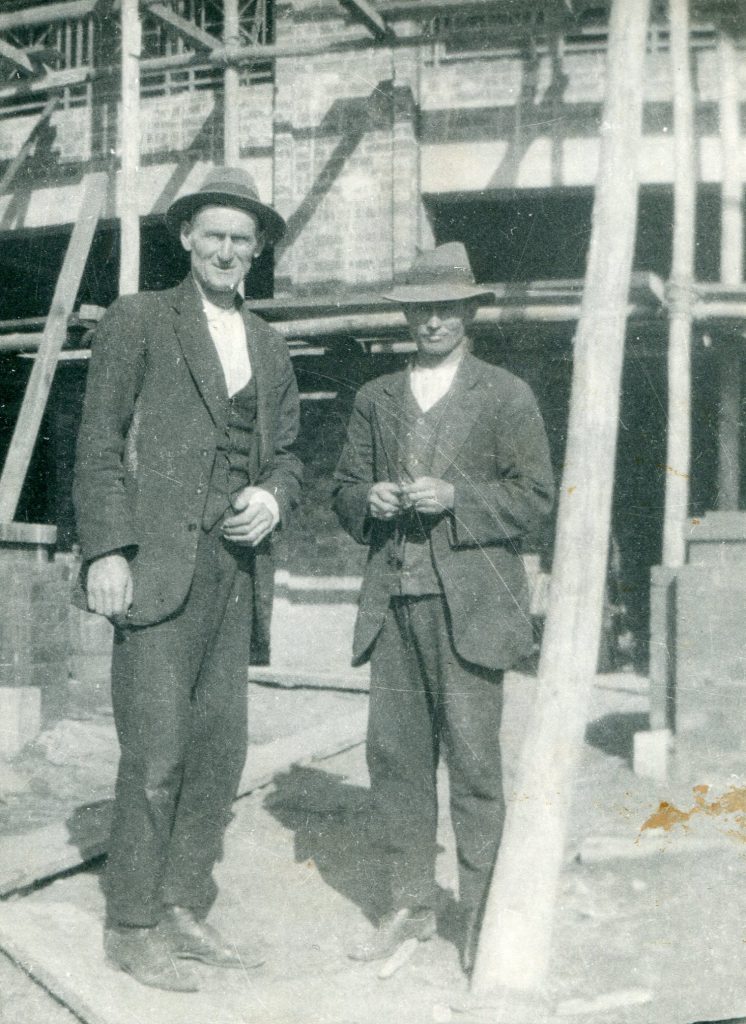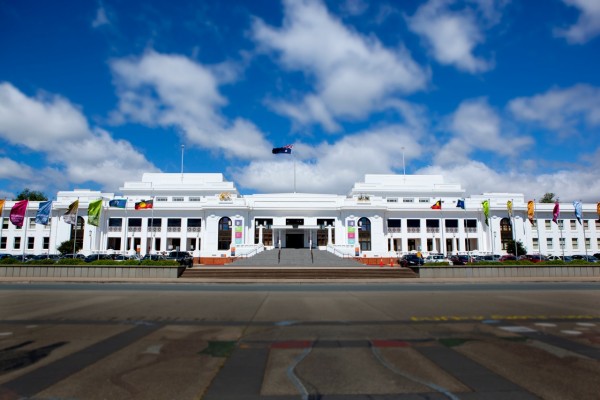Political expert and Griffith University scholar Professor Anne Tiernan has been appointed to the board of the Museum of Australian Democracy at Old Parliament House, an honour that brings with it professional and personal confluence for the lauded academic.
Professor Tiernan, who is the Dean (Engagement) for Griffith Business School and was foundation Director of the university’s Policy Innovation Hub, has spent her career fostering knowledge and understanding of Australian governance and public policy, but her interest in such topics actually extends back to her childhood.
She recalls listening to AM and PM in the car with her father as a child, and remembers “as clear as anything” the day the Whitlam government fell, when she was seven. Unsurprisingly, Professor Tiernan has been enchanted by the “iconic” building of Old Parliament House since.
“I was always interested in politics and current affairs, and politics and current affairs was, growing up, Old Parliament House,” she said.
The epicentre of Australian politics for most of the 20th century, Old Parliament House served as the nation’s parliamentary seat from 1927 to 1988, when it moved to the current Parliament House on Capital Hill. After an extended vacancy, the building reopened to the public in 2009 as the Museum of Australian Democracy.
Upholding democratic values
As a newly appointed part-time member of the Museum’s board, Professor Tiernan will serve for the next three years alongside the Honourable Dr David Kemp (Chair) and Mr Bernard Wright (Deputy chair) as well as her fellow members, the Honourable Simon Crean and Ms Cheryl Cartwright.
Collectively, the board is charged with not only preserving the building itself, but realising the Museum’s vision of enriching understanding and appreciation of Australia’s political legacy and the intrinsic value of its democracy.
“We’ve got responsibility for the building, but there’s also a very important role for the Museum at Old Parliament House in terms of fostering civic knowledge and understanding of Australian history, politics and democracy”, Professor Tiernan said.
Professor Tiernan has long been a proponent of engaged scholarship; in fact, Griffith’s reputation for contributing evidence and insights to improve public policies was a key driver of her decision to join the university, along with the work of acclaimed political scientist and Griffith academic Professor Patrick Weller AO.
Griffith a major player in shaping public policy
“The reason I came to the Department of Politics and Public Policy, as it then was, was because Griffith had played a central role in democratic reform in Queensland,” Professor Tiernan said.
“Pat Weller was – and remains, the pre-eminent scholar of Australian government. He had written on the Cabinet, he’d written on the prime ministership; if you were interested in the work of governing, this was the place to come.
“We’ve always played an active role in what’s happening in public administration and public policy at Commonwealth and state levels. In many ways, I’m an heir to a tradition of engaged scholarship that Griffith has always embraced.
“We see ourselves as having a civic responsibility to contribute – through research, teaching, public engagement and so on, to vibrant and healthy democratic institutions and processes; much as our namesake, Sir Samuel Griffith, did.
“The Museum is abouteducating Australians on our democratic values and how we got here.”
Still, heightening public appreciation for the political process is no small task; despite Australia’s rich and distinct political history, Professor Tiernan said that empirical data, notably the Australian Election Study “shows that the last 10 years has seen a precipitous decline in confidence in Australian democracy”.
“So, part of the mission of the Board is to support education and understanding about democratic values in Australia, which, after all, is one of the world’s most enduring and successful democracies,” she said.
“There’s a worrying lack of public understanding of how our system works, so I think that’s one of the jobs of the Museum: to support Australians to understand the way their system works, and that they have significant capacity to influence and shape it. Lots of great exhibitions and activities at the Musuem attempt to do that .”
Improving understanding of Australia’s political processes has been a recurrent theme in Professor Tiernan’s work; in 2016, she co-edited an edition of Griffith Review, entitled Fixing the System with fellow Griffith academic Professor Julianne Schultz. It highlighted opportunities to remedy aspects of the political process perceived to be ‘broken’. (Notably, it sold out upon its release.)
More recently, Professor Tiernan has set her sights on an Oxford Handbook of Australian Politics, co-edited with her colleague and friend, Professor Jenny Lewis of the University of Melbourne.
The pair is the first all-female editorial team for an Oxford Handbook. Their shared ambition is to demonstrate the distinctive nature of Australia’s political values.
“We were a democratic innovator,” she explained, “and I think it’s really important that Australians understand and celebrate that.
“Australia is an incredibly vibrant democratic experiment. We have compulsory voting, universal franchise — except for Indigenous people; one makes no claims that Indigenous people were well-treated — and women had the right to vote, later than New Zealand but still pretty early, very early in South Australia; we had women’s right to stand for parliament from early in the piece.”
Family link
Professor Tiernan’s interest in the country’s political history isn’t purely academic, however. In a remarkably serendipitous turn, her husband’s grandfather happened to be one of the construction workers who helped bring Old Parliament House to life between 1923 and 1927, a connection that further highlights the personal significance of her appointment to the Museum of Australian Democracy’s board.
“Canberra was the compromise capital; the original Australian parliament sat in Melbourne. New South Wales and Victoria couldn’t agree ,” she said. “So the compromise option was to locate the capital somewhere between the two.
“People often say that establishing Canberra as the ‘bush capital’ ruined a perfectly good sheep paddock, but these people came from everywhere to work on this important national building. Over time, a communitystarted to grow around it.
“Work began on that building in 1923; my husband’s grandfather, Frank Clowry, was a foreman carpenter. He used to ride his bicycle from the not-so-nearby community of Majors Creek, where the family lived.

Professor Anne Tiernan has family links to the building of Canberra’s Old Parliament House in the 1920’s
“Later the family settled in government housing, provided to attract people to Canberra. My husband’s mother grew up in that house — she and my father-in-law bought the house off her father. They lived there until our sons were born in the mid 1990s. Mr Clowry was a quiet, gentle man, but he became a bit of a character in the Canberra community, particularly the Catholic church.”
“So, for me, being appointed to the Board felt like a really beautiful symmetry. Obviously, it’s a professional highlight, but personally it has this lovely dimension in terms of our family’s connection too.”

